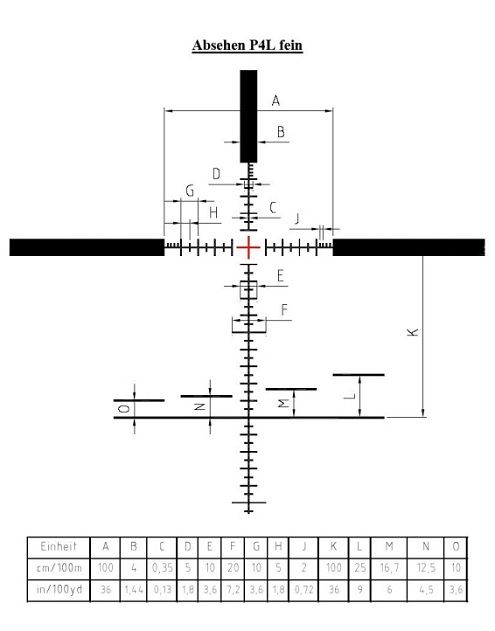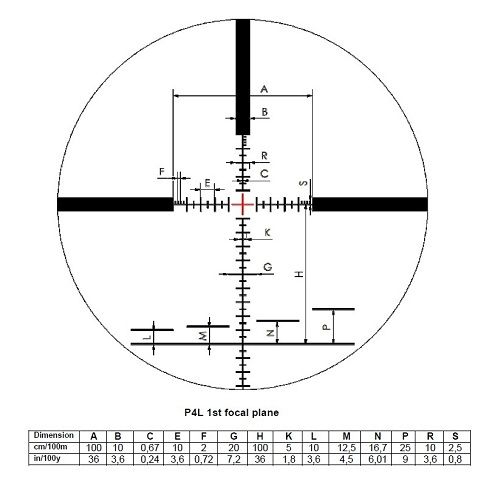Re: New Nightforce "B.E.A.S.T." & ATACR
<div class="ubbcode-block"><div class="ubbcode-header">Originally Posted By: LawnMM</div><div class="ubbcode-body"><div class="ubbcode-block"><div class="ubbcode-header">Originally Posted By: Lowlight</div><div class="ubbcode-body"><div class="ubbcode-block"><div class="ubbcode-header">Originally Posted By: LawnMM</div><div class="ubbcode-body"><div class="ubbcode-block"><div class="ubbcode-header">Originally Posted By: Vinson</div><div class="ubbcode-body">The main advantage for second focal plane scopes is that the reticle does not get magnified as power increases. That allows you to aim more precisely at high magnification. If I were shooting benchrest that might matter, but for tactical matches the advantages of FFP completely outweigh any perceived downsides of your reticle changing size. </div></div>
Common misconception. The reticle to target relationship is fixed. It covers up no more of the target at 25x than it does at 5x. I suppose that may be a willing trade off for bench resters and f class people but this is a tactical marksman website.
Having the opportunity to attend a large match, even just one or two, will quickly show you the advantage of ffp over sfp on variable scopes at varying ranges in a field setting.
If the steel clangs the reticle was precise enough for me. </div></div>
It's not a misconception...
The fact is, because the reticle has to be useable on both ends, low and high, they are generally speaking "thicker" across the board.
They can make a SFP reticle cover less area from the start, where "most" FFP reticles start their life off thicker in order to work at lower power. So yes it does "cover" more area across the board.
You can get some "thinner" FFP reticles, but then you trade off your lower end. </div></div>
It is a misconception. You are correct, I'm not trying to challenge your knowledge of the subject, I'm not in the same league. However, there are a vast array of people under the impression that because the reticle grows as you increase the mag, its covering more of the target at higher magnification.
The target grows also, it covers the same amount of the target anywhere within the magnification range. You know that, Frank, but many don't. Does the reticle have to be thicker than a SFP to cover the range of mag, I'm sure it does, I think some have thinner reticles available like you mentioned, I don't know a lot about that.
I do know for the kind of shooting promoted on this site, I've not found the FFP reticle in my Nightforce to be problematic with lining up a shot. My comments were directed at the "the reticle covers up more of the target at higher magnification on an ffp scope" crowd. If that's not what he was saying then I directed my response improperly.</div></div>
LawnMM,
I use FFP and for our type of shooting, "steel targets" the FFP reticles are fine... however there is a big difference, and I will demonstrate the only way I know how, with pictures.
Note the S&B P4 vs P4F
<span style="font-weight: bold"><span style="font-style: italic">PMII P4F Reticle Diagram. Notice Reticle Dimension "C", spec'ed at .130" at 100 yards/.35 cm at 100 meters:</span></span>
<span style="font-weight: bold"><span style="font-style: italic">PMII P4 Reticle Diagram. Notice "Dimension "C", spec'ed at .240" at 100 yards/.67 cm at 100 meters:</span></span>
Clearly one covers more than the other, before you adjust the power. If you go too low the reticle becomes almost unusable because the markings tend to vanish.
NF is known for thin reticles, and with their FFP offering, like the original MLR, the criticism was, it was not usable at lower power. You lose the ability to see the hash marks.
This is what people are talking about but explain it poorly.
A P4 reticle covers .65 cm at 100m, the P4F cover half that .35 cm at 100 m, see the difference .






